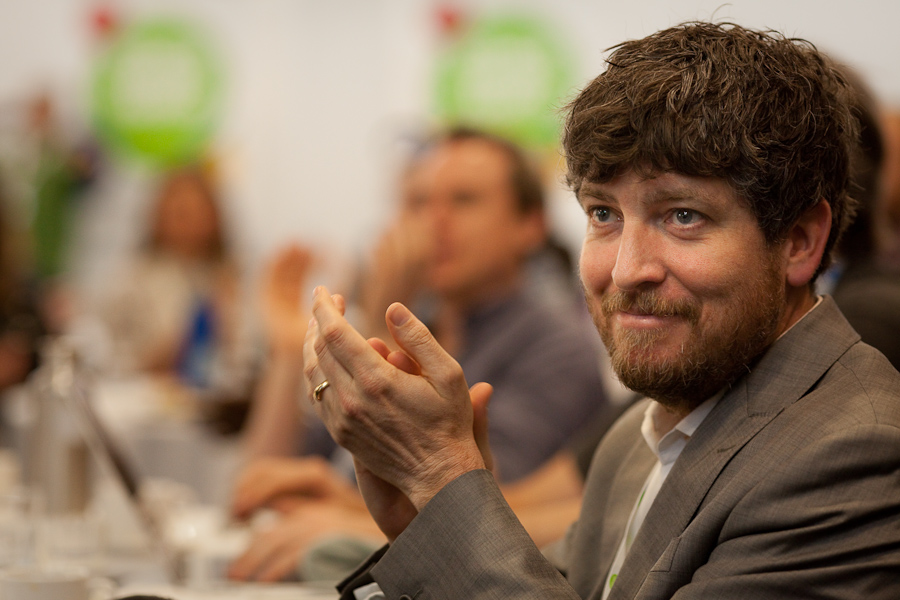Role & Organisation:
Co-Founder & Director, Red Hat Impact
What was your first job?
My first paid job was as a Research Assistant for a Psychiatrist at Uni of Qld. I was studying Psychology at Griffith Uni and was known as a bit of stats whiz, so was referred by a fellow student. I ended up getting my name on a bunch of journal articles!
When did you know you wanted to work in finance/business?
At some point while I was running a youth homelessness and suicide prevention service in Ipswich, I realised that the what was being written about in the Australian Financial Review had everything to do with the experiences and futures of the young people we were trying to help. Economic and political systems were failing them and so many others.
A bit later on I was privileged to get a job launching the Fairtrade system in Australia, which cemented for me the role of business and capital in building the communities and future we want.
When did you first discover the concept of Impact Investing?
I honestly can’t recall when the language change happened. I’d been involved with the emergence of the social enterprise movement in Australia 1998-2000, where we were all talking about finance and capital, and then Social Ventures Australia launched. I recall trying to push this concept of ‘the impact economy’ in a piece of work I did for Bank Australia in 2012, to be inclusive of B-Corps, social enterprise, the cooperative sector, the shared value movement, NFPs and the like.
Danny launched Small Giants somewhere around that time too. To me it just seemed to emerge to explain or put a name to a lot of what we’d been working on and trying to do for a decade or so.
What’s one exciting development you and your team have in the pipeline?
Our collaboration with StartSomeGood to launch our new crowdlending platform LendForGood. Red Hat Impact has now done $1.6 million of debt investments into 15 enterprises with our 50 person lender network. We are very excited about what LendForGood can do to amplify not just our own work, but that of impact intermediaries around the world who understand that we need to provide alternative pathways to impact finance for impact enterprises. We want to see 50+ Red Hat Impact type organisations around the world mobilising millions of dollars of debt capital every year from thousands of lenders into hundreds and thousands of impact enterprises.
What was the most interesting impact deal (from any team across Asia/Pacific) in the past 12 months?
I’m obviously biased, but I love the Pacific Menstrual Health Trade Finance Vehicle deal we helped facilitate. Fifteen women pooled their capital for a US$50,000 fund to aggregate demand and buy input materials for Pacific enterprises (some formal, some informal), formed and led by women, making reusable menstrual pads and providing health education and services for Pacific women. Talk about gender lens investment!
This deployment of private sector capital was the culmination of years of work funded by philanthropy and government – a true example of how important blended capital can be in creating investable opportunities, especially in emerging markets. Some of the other things I love about it: the Vehicle funds all costs up to the point that the enterprises take delivery (purchase of the inputs, shipping, storage, logistics, freight), and then the enterprises pay a single price per volume for the materials that covers all these costs + the cost of capital … and this price is still cheaper by a significant margin than what they were paying previously!
Also, they pay on delayed terms that mean they get to make the pads and sell them before their bills are due. They don’t have to enter into any loan agreements or anything – which is especially important for those informal operations.
We reckon finding ways to put impact finance to work in these kinds of ways – at ecosystem or market levels – holds a lot of promise to unlock more impact and support a broader variety of impact enterprises.
People can see the many layers to this deal and its impact in this great video that Pacific Rise put together.
Name one high impact company (globally) that investors should keep their eye on?
People should be paying more attention to what Armillaria is doing. They are doing heaps of the necessary behind the scenes work needed to really grow and scale solutions to meet the challenges we face in this century. Anything they are spending time on would be worth your investment.
What’s your vision for impact investing in 5 years time?
More diversity in what it looks like, including about 80% less emphasis on VC, Silicon Valley models. Some of the most interesting and impactful stuff I’m seeing won’t have shareholders where equity investments are an option, and they certainly are not offering 10x plus returns.
If we are going to keep our communities liveable as the climate crisis worsens, we are going to need to invest in a lot more initiatives that work to retain and restore ‘the commons’ which we all take for granted. Regenerative and restorative finance. Community ownership and governance. Investing in what enables us to move beyond capitalism and what democracy has become. It’s going to take all of us, and a huge shift in power.

